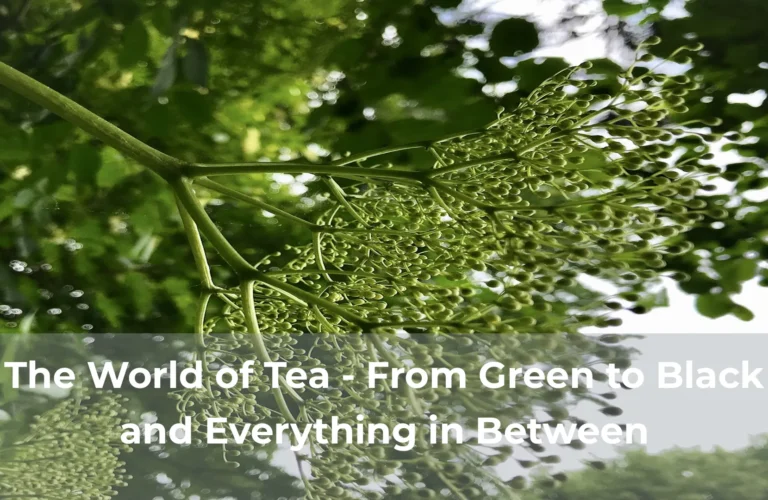The World of Tea – From Green to Black and Everything in Between
Tea is one of the most beloved and widely consumed beverages in the world. From its origins in ancient China to its global popularity today, tea has evolved into a diverse and fascinating world of flavors, aromas, and traditions. Whether you prefer the delicate notes of green tea or the robust richness of black tea, there is a brew to suit every taste and occasion. Join us on a journey through the vast and captivating world of tea, exploring its various types, production methods, and cultural significance.
Green tea, with its vibrant green leaves and refreshing taste, has been enjoyed for centuries and is renowned for its numerous health benefits. From the smooth and grassy flavors of Japanese sencha to the floral and slightly sweet notes of Chinese dragon well, green tea offers a wide range of tastes to explore. This type of tea is known for its high levels of antioxidants and is believed to aid in digestion, boost metabolism, and promote overall well-being. Whether sipped hot or cold, green tea is a popular choice for those seeking a revitalizing and nourishing beverage.
On the other end of the spectrum, black tea is bold, robust, and full-bodied. Its deep amber liquor and distinct flavors make it a popular choice for those seeking a stronger, more invigorating cup of tea. From the malty and brisk Assam teas of India to the floral and fruity Darjeeling teas, black tea offers a wide array of flavors and aromas. Often enjoyed with a touch of milk or a slice of lemon, black tea is a comforting and energizing beverage that has become a staple in many cultures around the world.
The History of Tea: From Ancient Origins to Modern Day
Tea, a beloved beverage enjoyed by millions around the world, has a rich and fascinating history that spans centuries. Origins of tea can be traced back to ancient China, where it was believed to have been discovered by the legendary Emperor Shennong around 2737 BCE. According to Chinese mythology, while sitting beneath a tree, a few leaves accidentally fell into his boiling water, creating a delightful aroma. Intrigued, he took a sip and found it refreshing and invigorating, thus marking the birth of tea.
As tea gained popularity in China, it gradually spread to neighboring countries, including Japan, where it became an integral part of their traditional tea ceremonies. In the 16th century, tea reached Europe through Portuguese and Dutch traders, captivating the taste buds of the Western world. The British, in particular, developed a deep affinity for tea, leading to the establishment of vast tea plantations in India and Sri Lanka during the colonial era. Today, tea has become a global phenomenon, with countless varieties and flavors to suit every palate, from the classic black tea to the delicate green tea and the aromatic herbal infusions.




